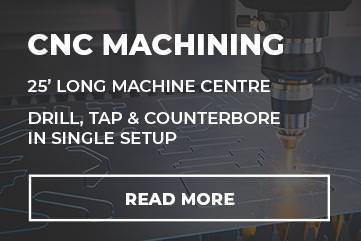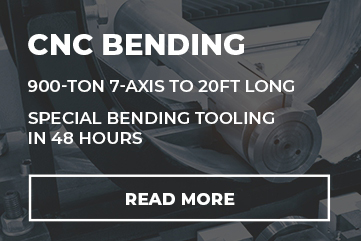News
5 Best Types of Steel Staircase Designs
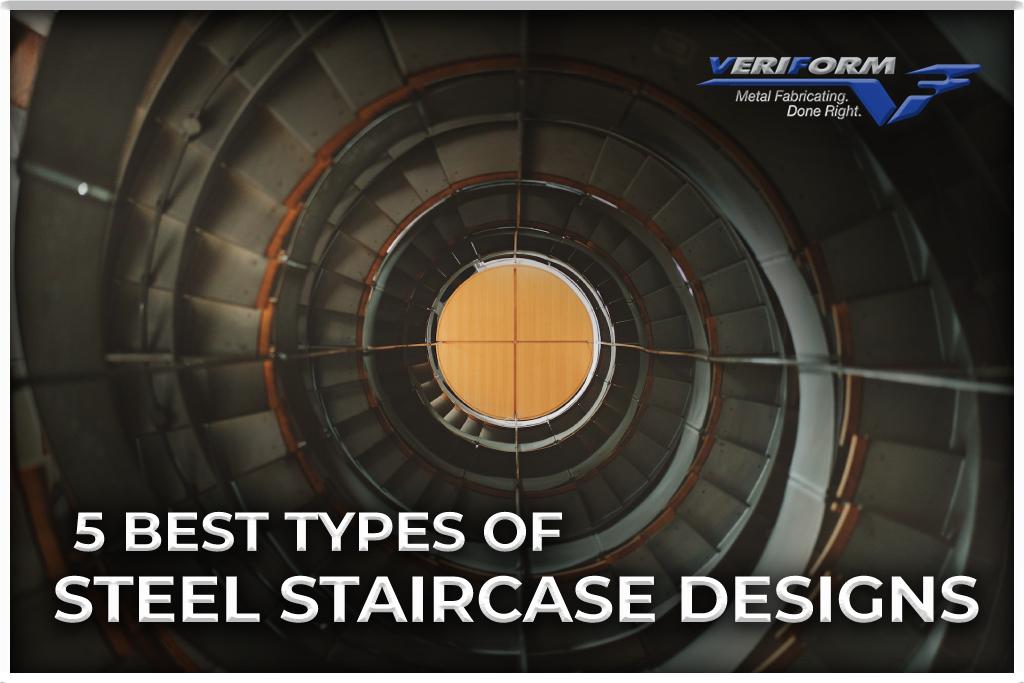
Steel staircases have several advantages. They’re sustainable, low-maintenance, and easy to customize. For these reasons, they’re in demand in all kinds of locations, from homes and offices to factories and industrial facilities.
Choosing the best steel staircase design can be daunting, especially with so many available options. That’s why the experienced team at VeriForm Inc. created this blog to help you explore the five best types of steel stairs and their unique features.
Where Are Steel Staircases Installed?
Steel staircases are versatile and can be installed in a variety of settings, both indoor and outdoor. Here are some of the more common places to encounter them:
- Commercial Buildings: Steel staircases are commonly used in commercial buildings such as offices, hospitals, schools, and shopping malls. They provide a durable and long-lasting solution for high-traffic areas and can be designed to comply with safety codes and regulations.
- Industrial Facilities: These staircases are also used in industrial facilities such as factories and warehouses. They provide a safe and sturdy access point to mezzanines, platforms, and other elevated areas.
- Residential Buildings: Contemporary and industrial-style homes increasingly feature steel staircases. They provide a sleek, minimalist look and can be customized to fit any space.
- Outdoor Spaces: Outdoor spaces such as parks, stadiums, and public spaces can also be fitted with steel staircases. They are weather-resistant and can be designed to withstand extreme conditions.
What Are The Best Types of Steel Stairs?
Are you having trouble deciding on a staircase style for your facility? Here are some of the best types of steel stairs in use today.
Straight Steel Staircase
For a steel staircase, this is the most common and straightforward design. It consists of a single flight of straight stairs that goes from one level to another without any turns, making it a perfect option for homes and buildings with limited space. The steps can have closed or open risers, and they can be designed with or without a landing, depending on the height of the space and the desired look and functionality.
One of the benefits of a straight staircase is that it is easy to navigate. Additionally, it can be more cost-effective than other types of staircases, as it requires less complex design and construction. However, straight stairs can take up more floor space than other types of staircases and may not be suitable for small or narrow spaces.
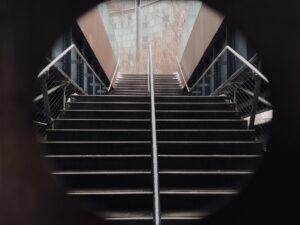
Spiral Steel Staircase
A spiral staircase consists of a central post or column around which the steps wind in a spiral pattern. They are often used in small or narrow spaces where a traditional straight staircase may not fit. They can also serve as a striking architectural feature, adding a touch of elegance and sophistication to any space.
Spiral staircases can have open risers or closed risers and can be designed to turn clockwise or counterclockwise. The steps can be wide or narrow, and the handrail can be made of various materials such as metal or wood.
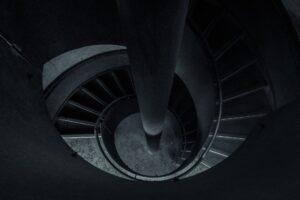
Floating Steel Staircase
A floating steel staircase is an ultra-modern design that creates the illusion of floating stairs. Unlike traditional staircases, which rely on a visible structural support system such as a stringer or a central beam, floating staircases are designed to be self-supporting, with each step attached to a hidden support structure within the wall or the staircase itself.
These unique steel staircases can be straight, curved, or angled and can feature open risers or closed risers. The steps themselves can be thick or thin and can be designed with various edge profiles. However, they may require a higher level of structural engineering than traditional staircases and may be more expensive to install.
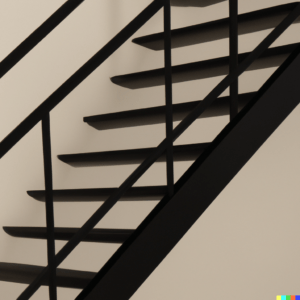
L-Shaped Steel Staircase
An L-shaped staircase changes direction at a landing. It typically consists of two flights of stairs connected by a 90-degree turn. One flight goes up a certain number of steps, and then the other flight begins at a landing and goes in a perpendicular direction. The landing in between the two flights of stairs can be either a small platform or a larger area that allows for a turn and rest. L-shaped steel staircases provide an elegant and practical solution for changing elevations while taking up less floor space than a straight staircase.
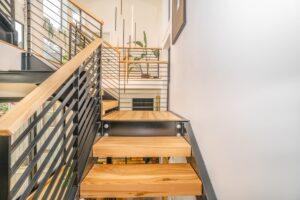
U-Shaped Steel Staircase
A U-shaped staircase consists of two parallel flights of stairs connected by a landing at the bottom and/or top, creating a U-shape in plan view. The stairs are typically wider than those in a straight or L-shaped staircase, which allows for a more spacious feel and greater traffic flow. They also provide a continuous handrail, which can improve safety and accessibility. The landing in the middle of the staircase can serve as a natural pause point or gathering spot.
Overall, a U-shaped staircase can be a stunning architectural feature that adds both style and functionality to a space. However, they do require careful planning and installation to ensure proper structural support and safety.
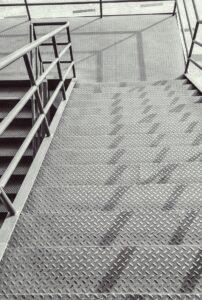
What is the Best Metal for Fabricating Steel Staircases?
There are many factors to consider when choosing the best metal for stairs, including the specific application, design requirements, durability, and maintenance requirements. These are some of the common types of metal used for stairs:
- Aluminum: Aluminum is a lightweight and corrosion-resistant metal that is easy to maintain and can be finished with various colours and textures. However, aluminum may not be as strong as steel and may require additional support for heavy traffic.
- Steel: Steel is a popular choice for stairs due to its strength, durability, and versatility. It can be shaped and welded to create different designs and can be finished with various coatings to prevent corrosion and wear.
- Stainless Steel: Stainless steel is a corrosion-resistant, low-maintenance metal that provides a modern, sleek look. However, stainless steel can be expensive and may require more maintenance to keep its shine.
- Bronze: Bronze is a durable, corrosion-resistant metal with a classic, elegant look. It can be shaped and finished to create intricate designs but may require more maintenance to prevent tarnishing.
Ultimately, the best metal for stairs will depend on the project’s specific requirements, including the design, location, and budget. It’s best to consult with a professional to determine the best metal for your particular needs.
VeriForm Inc.: Your Steel Fabricating Experts
A steel staircase can significantly affect how people use and perceive your space. Once you decide on the best design for your needs, your next step should be contacting a steel fabrication company with a reputation for quality results.
At VeriForm Inc., our architectural fabrication services are the result of unique and creative collaborations with engineering and design firms. We work with different types of steel to bring your chosen steel staircase design to life. Learn more or get a quote for your next project by visiting our website, calling 519-653-6000 or contacting us online.


